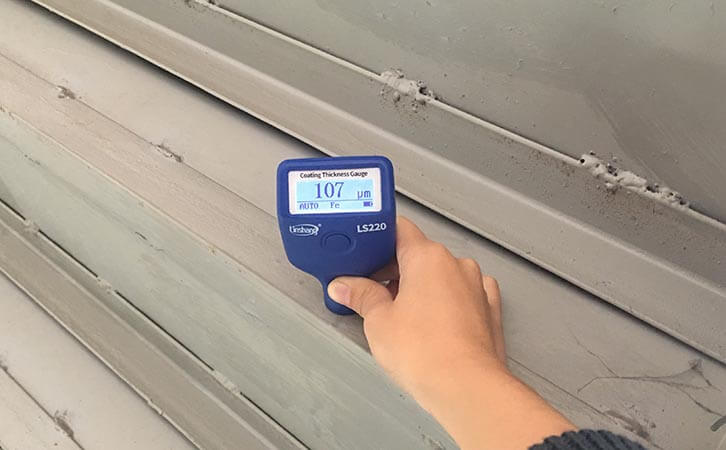Coating Thickness Tester Measures Metal Furniture Surface Coating
Metal furniture on the market is increasingly used in various industries such as home furnishing, teaching and office. Metal furnitures generally have a smooth and hard look. This external characteristic is mainly determined by the base material of the metal and the coating on the base surface. Because of different application scenarios, we not only require the metal substrate surface coating to be beautiful and hard, but also require the coating to have gloss, hardness, impact resistance, corrosion resistance, adhesion and so on.
1. The relationship between coating thickness and various properties
To achieve those functions, the relationship between coating thickness and performance is inseparable. Therefore, we usually use a coating thickness tester to detect coating thickness, so that the coating on the metal surface meets the above performance when the thickness is reasonable. Abrasion resistance is one of the most important characteristics of metal furnitures. If the furniture surface is bright again, if the wear resistance is not good, it means that the furniture is not durable. So what is the relationship between coating thickness and abrasion resistance? Let's experiment.
2. The relationship between test coating thickness and wear resistance
Here we recommend using Linshang LS220H coating thickness tester. Because ordinary coating thickness testers need to be calibrated, Linshang coating thickness testers are simple in design and simple to operate. They only need to be zeroed without calibration, which is very convenient to use. Open the Linshang LS220H coating thickness tester and press the instrument vertically on the measured object surface to measure the data. (Sampling) Take multiple measurements at different points to obtain the average value during sampling. After obtaining the average value, obtain the average value at different positions.
Prepare a sample and measure coating thickness with a coating thickness tester. Obtain the same material respectively to make different coating thicknesses on the same template. Then sand the sample on the sander and set the sanding value. When the coating thickness was measured with a coating thickness tester of 99.6 μm, the number of revolutions of the sander was set to 350 and the appearance of the coating after grinding was not worn. When the coating thickness was measured by a coating thickness tester to be 73.1 μm, the number of the sanding machine revolutions was set to 350 and the appearance of the coating after grinding showed that the coating was slightly worn. When the coating thickness was measured by a coating thickness tester to be 51.2 μm, the number of revolutions of the sander was set to 350 and the appearance of the coating after grinding showed that the coating was severely worn.
3. Summary of the relationship between coating thickness and wear resistance
It can be seen from the above tests that there is a certain relationship between the coating thickness and abrasion resistance. If coating thickness is measured with a coating thickness tester, the coating thickness will seriously affect the wear resistance. After repeated experiments, we concluded that if the thickness value of the metal furniture surface coating is within the range of (70-90) μm, then the wear value of the coating is relatively low and the coating will wear slightly. If the thickness of the surface coating is in the range of (90-100) μm, the wear value of the coating will be slightly higher and the appearance of the coating film will be relatively intact. When coating thickness reaches 144.7 μm, the appearance of the coating is better after the test, but the wear value of the coating is relatively high.
Linshang LS220H coating thickness testeris particularly convenient when measuring the metal furniture surface coating. This coating thickness tester uses magnetic method and eddy current method. Both the thickness of the non-magnetic coating on the magnetic metal surface and the thickness of the non-conductive coating on the on-magnetic metal surface can be measured.
- High precision coating thickness gauge for used car
- Automotive paint protection films coating thickness gauge
- Plating Thickness Measuring Instrument for Detecting Anti-corrosion Coating
- Linshang LS220, LS191, LS160A– Necessary for Car Cover Inspection
- Coating Thickness Gauge for Second Hand Vehicle
- Zero Adjustment Step of Coating Thickness Gauge
